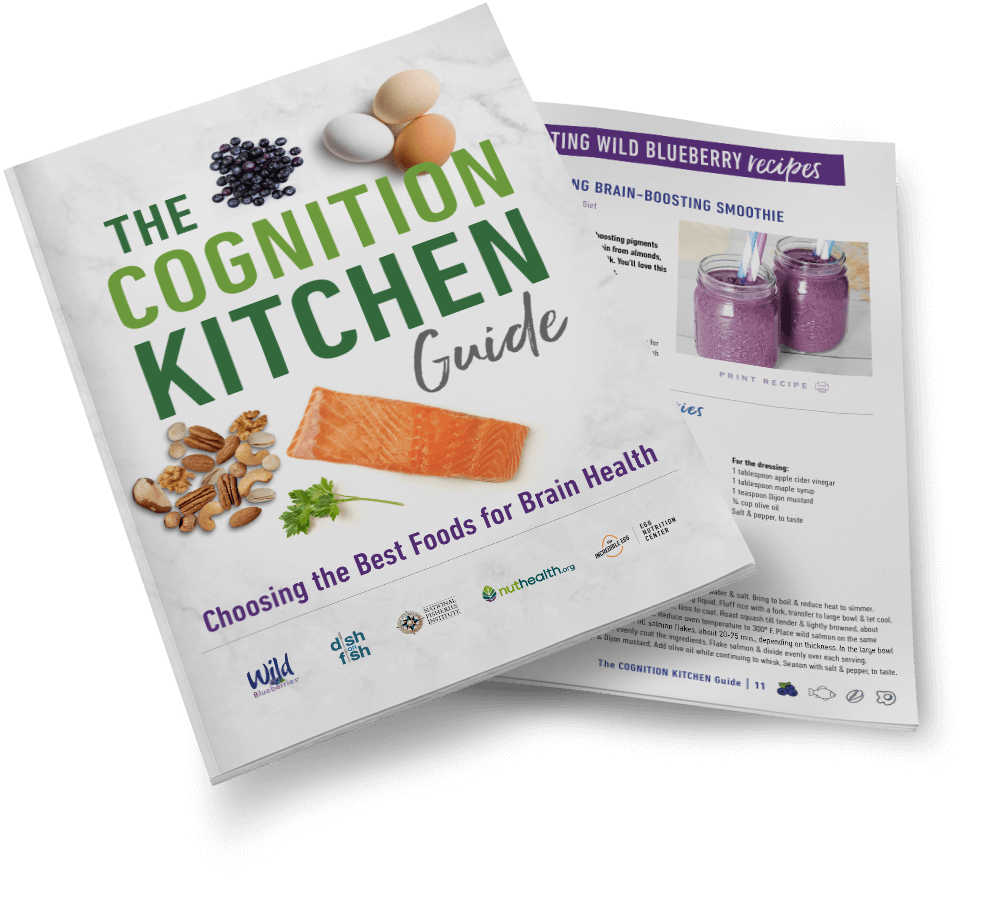A Healthy Heart Month “Two-fer” From Wild Blueberries
Written by Kitty Broihier, MS, RD, LD, Nutrition advisor and spokesperson for the Wild Blueberry Association of North America.
Getting a two-for-one deal is attractive any time of year, and when it comes with health benefits and a delicious taste, that’s even better! Have you ever heard the saying, “What’s good for the heart is good for the brain?” Yes, that’s the “two-fer” we are talking about here. February is Heart Month, so it’s a perfect time to explore the heart-healthy benefits of wild blueberries. It’s also the perfect time to talk about why the same components that help the heart are likely to also help the brain. Let’s take a closer look at how this relationship works in the body, and how you can take advantage of this special wild blueberry “two-fer” benefit.
How can wild blueberries benefit heart health?
On the most basic level, eating wild blueberries is good for your ticker because fruits and vegetables are a cornerstone of a heart-healthy diet. First, produce provides nutrients, fiber and phytonutrients that support a healthy cardiovascular system. The American Heart Association encourages us to choose a variety of fruits and vegetables specifically for their heart-healthy nutrients.
Secondly, an increasing body of scientific evidence links the purple-blue pigments in wild blueberries, called anthocyanins, to a reduced risk of diseases, including cardiovascular disease. Improvements in vascular function have been seen in several studies with wild blueberries. Other research has shown a reduction in the risk of hypertension (high blood pressure) with higher anthocyanin intake. And a recent meta-analysis of research on anthocyanins, anthocyanin-rich berries and cardiovascular disease concludes that the evidence suggests that regular consumption of anthocyanin-rich berries could help prevent cardiovascular disease through lipid-lowering and anti-inflammatory properties. Wild blueberries have the highest concentration of anthocyanins among commonly consumed berries, and 33% more per serving than cultivated blueberries. And of course, they’re delicious! So it’s easy to eat a scoop of them every day.
How are anthocyanins healthy for the brain?
The abundant anthocyanin pigments in wild blueberries that confer heart benefits are the same compounds that are associated with improved brain health and cognition. Research studies have shown links between anthocyanins (part of the naturally-occurring plant compound class called flavonoids) and brain benefits ranging from staving off age-related dementia to memory and executive function (our ability to organize, focus and make decisions). Scientific evidence indicates that flavonoid compounds, such as anthocyanins, can be brain boosting for children and teens, too.
How to put together a diet that benefits both the heart and the brain
Putting together a healthy diet doesn’t have to be complicated. Although science evolves over time, the basics of what constitutes a healthy diet generally stay the same.
According to the World Health Organization (WHO), a healthy diet not only protects against malnutrition, it also helps prevent diseases like heart disease, diabetes, stroke and cancer. As far as promoting both brain and heart health, it’s clear that both will benefit if you eat a diet that’s:
- packed with produce
- lower in saturated fat
- and lower in added sugars and salt (sodium)
So, what can you do specifically? Consider focusing on what to add. When you pack a diet with “good stuff” there is naturally going to be less room for those foods that aren’t doing your body any favors. One impactful way to begin is by adding more produce to your diet, since most people fall short of getting enough of these important foods.
- The WHO lists fruits and vegetables first on their list of what a healthy diet includes, and recommends getting five servings of produce per day.
- Health authorities also suggest that increasing the variety of fruits and vegetables we eat is important for covering nutrient needs. An easy way to increase variety is to focus on color.
- Choose fruits and vegetables that provide a range of colors. There aren’t a lot of blue fruits and veggies, so wild blueberries are an easy choice there.
- Start having fruits and veggies as snacks instead of choosing cookies, crackers or chips that are loaded with sodium, sugar or added fats.
- Keep it simple and opt for fruits and vegetables that have no added ingredients. Not only are they more healthful than versions with added sauces, sugar or syrups, but they’re more versatile as well. Frozen wild blueberries have no sugar or salt added, yet they have lots of flavor—and they are perfect for snacking, or putting in a smoothie or sprinkled over cereal or yogurt. Plain frozen vegetables can easily be added to recipes as they are, or jazzed up with herbs and spices.
- Expand your recipe repertoire. Browse Pinterest, recipe websites and cooking blogs online for lots of tasty-looking ideas. Keep in mind the other factors in your brain- and heart-healthy diet (trimming saturated fat, keeping a lid on sodium and sugar) so you don’t “undo” the benefits of those fruits and veggies.
If you need wild blueberry recipe ideas, we’ve got you covered from breakfast to dinner.
Get Great Recipes & More Each Month!
Sign up for occasional emails with recipes, health and nutrition tips, and more.

More About Brain Health
Blu-Flow study spotlights wild blueberries’ support of cardiovascular and cognitive function
New Research Study Indicates Wild Blueberries Improve Brain’s Processing Speed
A Healthy Heart Month “Two-fer” From Wild Blueberries
The Seven Wild Ways to a Healthy Brain in 2024
The Wild Difference: Celebrating Wild Foods Day All Month Long

DOWNLOAD THE COGNITION KITCHEN GUIDE
A free resource to help you and your family start eating for brain health today. Find recipes, a grocery list, easy-to-understand health research, and more.

